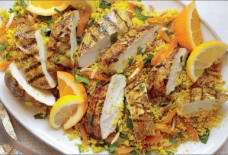UNESCO Celebrates World Arabic Language Day on December 18th
By: Mariam Kanaan/Arab America Contributing Writer
Every year, the United Nations celebrates the Arabic language.
In 2012, the UN declared December 18th World Arabic Language day to celebrate the 1973 anniversary of when the General Assembly of the United Nations recognized Arabic as its sixth official language.
With an ongoing pandemic that’s changed everything from birthdays to school settings, this year’s annual celebration is going to look different as well. The celebration will take place online, as UNESCO spearheads a global discussion webinar over Zoom on December 17th, with the theme: “Arabic Language Academies: Necessity or Luxury?” The idea is to question the role of the Arabic language today.
How Arabic Made Its Mark on the World
Arabic was the language of science from the eighth to the twelfth centuries. This is similar to the way that English is today’s global language. Historically, Arabic plays a major role as the language of the highly educated, science, philosophy, technology, and art. Arabic has since been translated to local languages over hundreds of years.
Our modern numbers are in fact called “Arabic numerals.” This is because of their historic influence, introduced to the European world from al-Andalus, by Arab merchants and mathematic conventions.
Influence on Language
Arab America contributing writer, Habeeb Salloum, reminded us of the great impact that Arabic had on one of the greatest civilizations: Al-Andalus. Arabic influenced the Spanish language and was highlighted as the language of knowledge. Cordoba, for example, had over 60 libraries at a time when libraries were scarce. They had “over 600,000 volumes of handwritten manuscripts.”
“Besides Spanish,” Salloum wrote, “Arabic contributed to the vocabularies of all the European idioms. The same goes for more than half of the Pushto dialect, half of Urdu vocabulary, and over a quarter of the Persian language.
Arabic has more words than Latin languages. There are 100 words in Arabic for camel, 11 for “love,” 50 ways to say “beautiful,” and 99 names to call upon God.
“Since the language is over 1,500 years old, it’s had a lot of time to develop,” says Tarek Makhlouf. “It is one of the largest languages in the world, and rich in descriptive terms for expressing adoration.”
What Arabic Looks Like Today
Hasan Al Naboodah, an Emirati historian and Dean of the College of Humanities and Social Sciences at UAE University, in an interview about the Arabic language’s origins, relays why Arabic is important today. He states that Arabic remains the language spoken by 400 million people, and goes on to say, “Arabic is a very rich language; it has different dialects and different calligraphic forms and styles,” he said.
Arabic makes it easy to connect with other cultures and learn other languages. He continues to say, “Its history is as complex as the history of the countries that use the language.”
Join the Global Celebration December 17, 2020 on Zoom, and don’t forget to use the hashtag #ArabicLanguageDay
Read the latest at arabamerica.com
- 5 Tips to Perfecting Middle Eastern Restaurant Style Chicken
- Stepping into Yemen: The Met Museum Celebrating the Rich Cultural Heritage of Yemen and the Repatriation of their Art
- What Can Gaza Student Protests Teach Us?
- Capernaum review: Living a Zero-Sum End Game
- A Day to Remember at MLK Library for Heritage Month!


